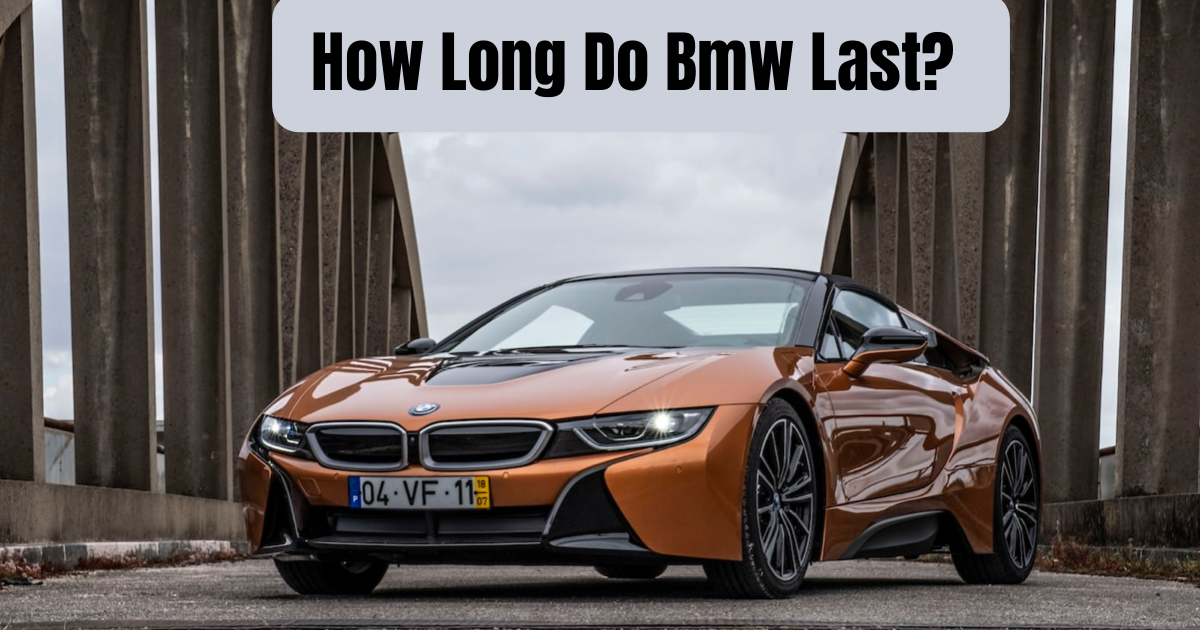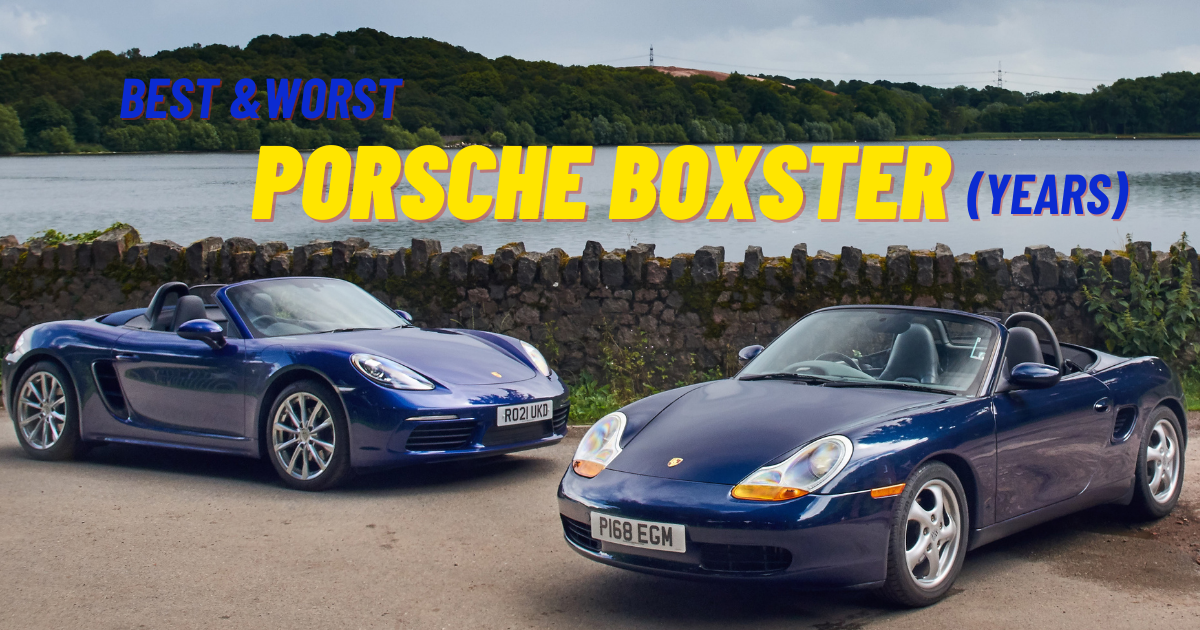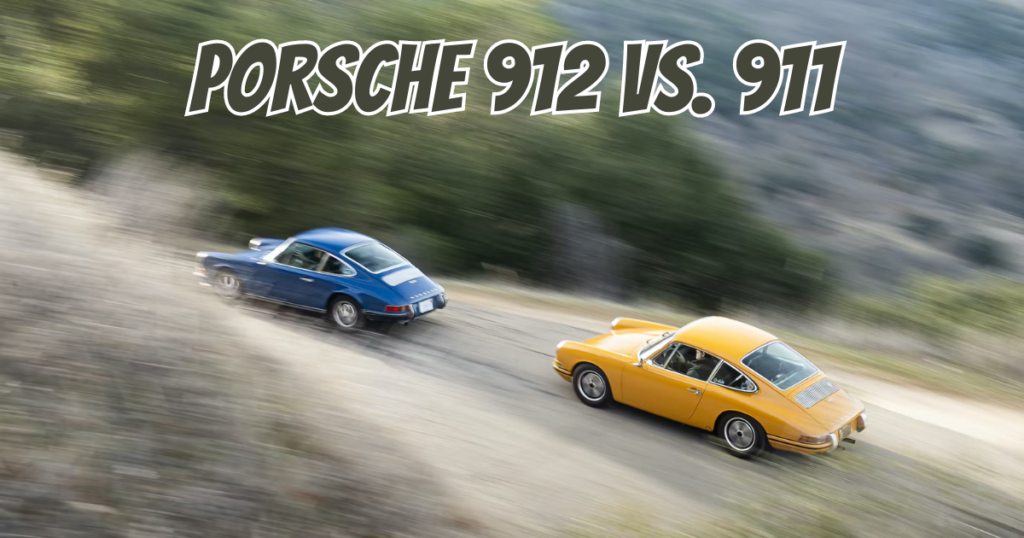
The Porsche 911 and 912 are without a doubt two of Porsche’s most iconic automobiles. The two vehicles have proven themselves as two of Porsche’s best vehicles over the years, and their continued popularity among car enthusiasts demonstrates their ageless appeal.
The 911 originally appeared on the market in 1964, and the 912, essentially a bargain version of the 911, followed the next year. Although the 912 was less expensive than the 911, it still had a lot to offer. It also established a dedicated fanbase as a result of its excellent performance and handling.
In this blog, we’ll weigh in on the age-old dispute between the Porsche 912 and the 911: which is better?
History of the Porsche 912 & 911
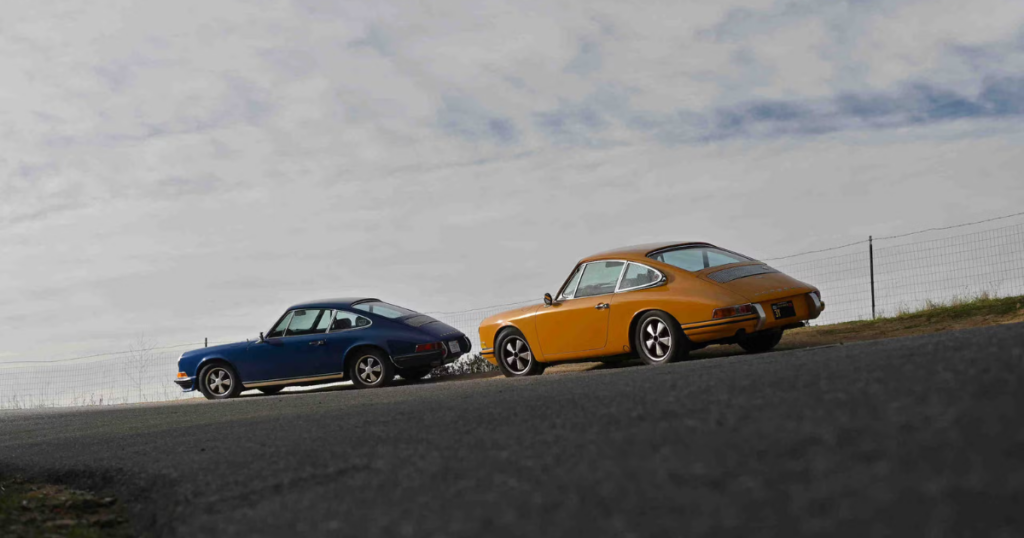
The Porsche 911 was introduced in September 1964, and the Porsche 912 followed suit in 1965. The 912 was supposed to be a more economical alternative to the 911, with many of the same components but a few important modifications to reduce costs.
The Porsche 912 had a body shape that was remarkably similar to the Porsche 911 coupe, and it had the recognizable Porsche crest on its hood, giving it a striking visual resemblance to the 911. One key reason Porsche released the 912 was a decline in sales of the expensive six-cylinder 911. The 912 cost $2,000 less than the 911, which sold for $6,500.
It offered consumers a Porsche with features and the cost fell somewhere between the older Porsche 356 and the new 911. Ultimately, the 911 became an instant hit among motor fans due to its amazing engine, but the 912 sold far more copies due to its lower price. Porsche sold two times as many 912s as 911s in 1967.
Although the general public typically considers the 912 to be inferior to the 911, enthusiasm for the 912 increased significantly in the early 2000s, and it became a much-celebrated classic sports car.
Porsche 912 vs. 911: Major Differences
Engine Specifications
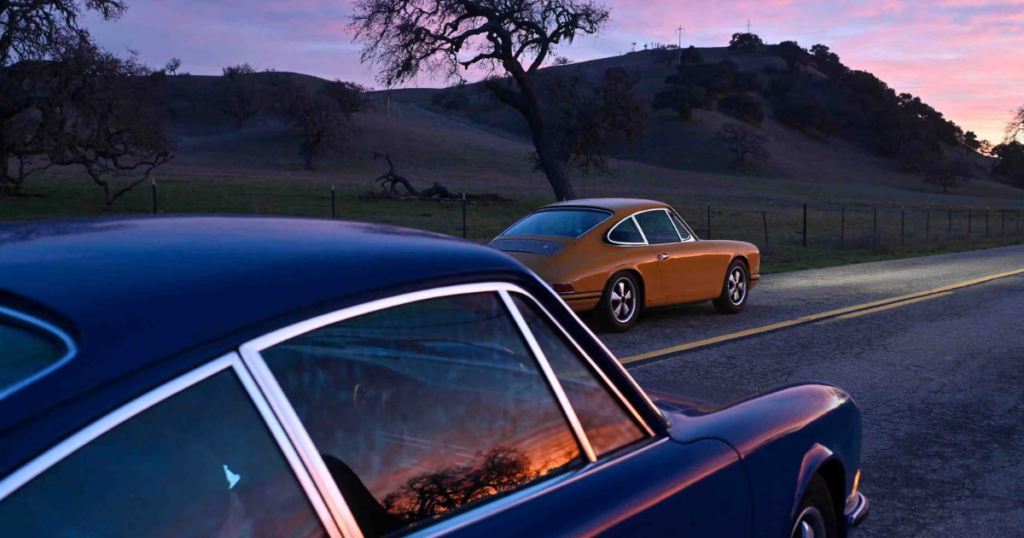
The Porsche 911’s engine is one of its key selling points. The 912 had a 1582 cc air-cooled flat-four engine, but the original 911 had a potent 1991 cc air-cooled flat-six engine. The 911 had five different engine options over the years, ranging in size from 1987 cc to 2404 cc and producing between 128 and 190 horsepower. The engine’s power is routed through a 5-speed manual or 4-speed semi-automatic transmission.
Although the 912’s air-cooled, 1582 cc flat-four engine allowed it to be sold for less money, it is obviously not as good as the engine in the 911. The Type 616/34 B4 engine is derived from the Porsche 356 and weighs significantly less than the 912’s powerhouse engine.
Porsche upgraded the engine of the 912 to 90 horsepower at 5,800 rpm and paired it with a 4-speed manual transmission. In the end, Porsche replaced the 356 engine with a Volkswagen Type 4 H4 to comply with new fuel laws.
Interiors
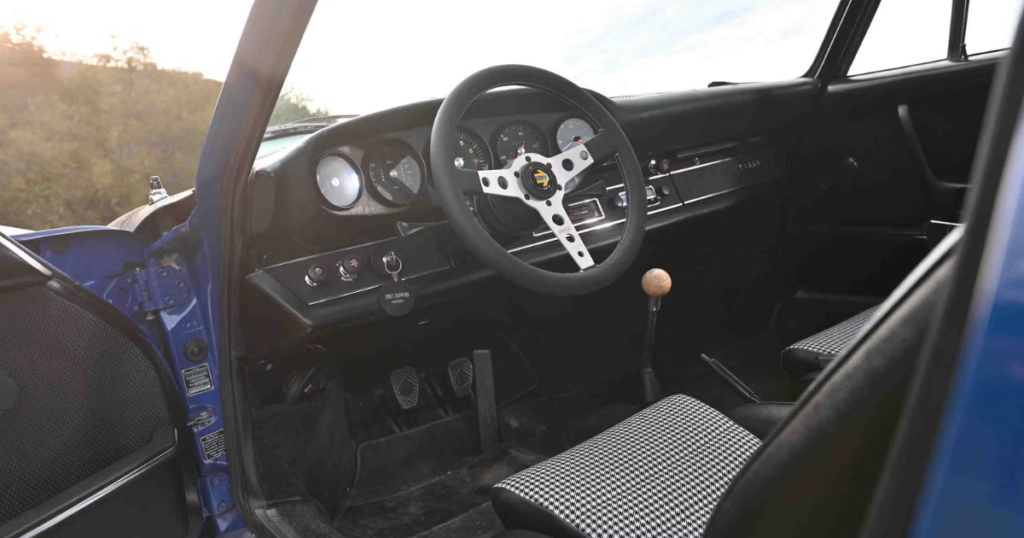
The interiors of the Porsche 911 and Porsche 912 vehicles were very similar, especially in the early years of manufacturing. Both versions typically had a driver-focused cockpit with premium materials like leather, aluminum, and chrome highlights in a minimalistic design. Additionally, both had a Porsche symbol in the center of a basic, leather-wrapped steering wheel.
The dashboards of the two cars were noticeably different. The early iterations of the 912 featured a three-gauge cluster, but Porsche later added the complete five-gauge cluster present in the 911. Another significant difference between the two vehicles is their instrumentation; the 912 lacked the 911’s oil level and pressure gauges.
Handling
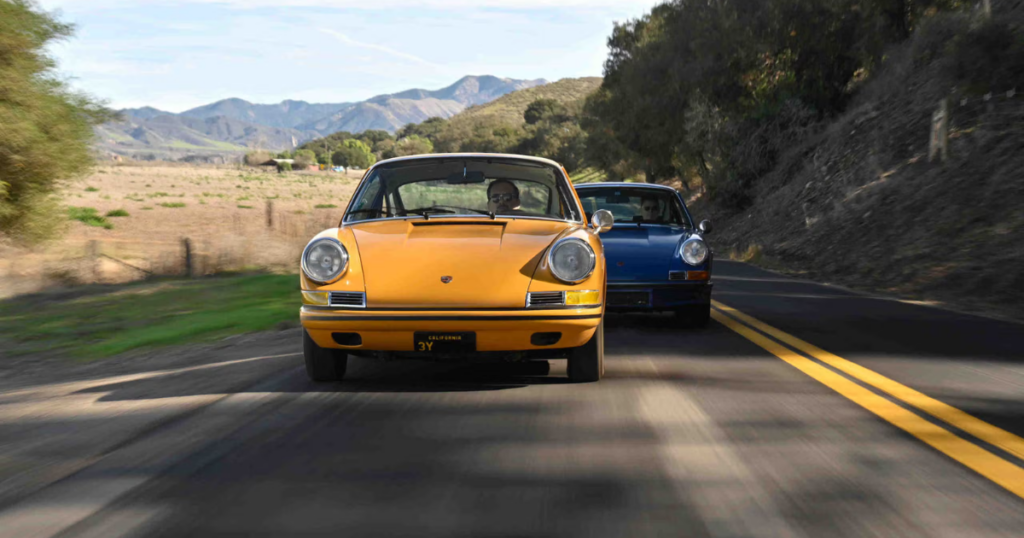
Although the Porsche 911 is renowned for its exceptional performance, the Porsche 912 generally has better handling because of its smaller weight and more simple layout. The 912 weighed roughly 2,095 pounds (950 kg) curbside when it was first produced, whereas the 912 weighed about 2,381 pounds (1080 kg). This is a significant variation that affects how well the cars operate.
The 912 is more agile and maneuverable on the road, resulting in more precise handling and control. The car’s increased aerodynamics enable even better steering and drivability. If you’re driving a classic Porsche on a winding path, you’re more likely to prefer the 912 than the technically superior 911.
Affordability
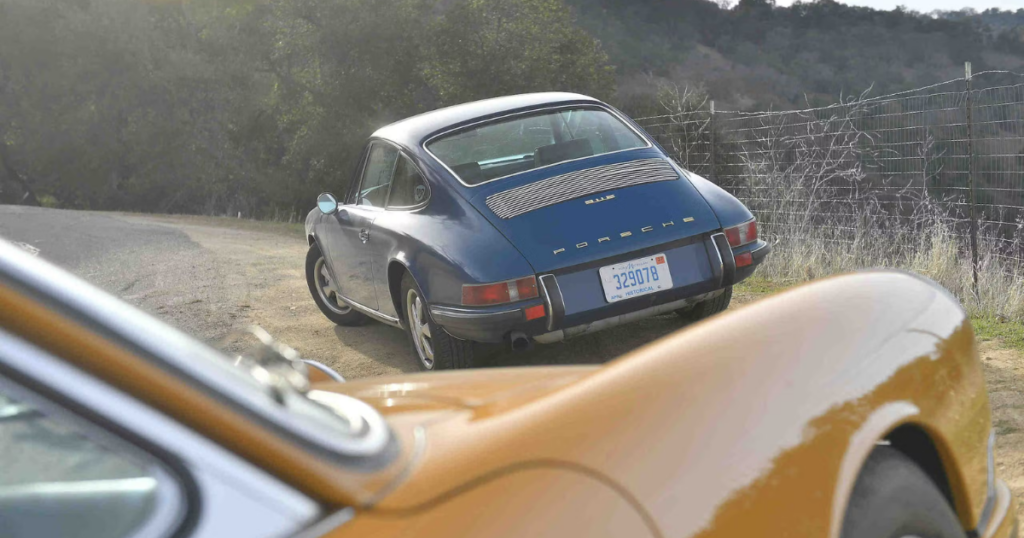
Porsche says, “To bridge the price gap between the 356, which was still being produced at this time and the 911, in 1965 Porsche launched the 912, a less expensive and significantly less powerful variant of the 911.”.
Under the hood, the “entry-level” Porsche had a 1.6-liter air-cooled 4-cylinder flat-4 from the previous 356 SC, which was mated with a four-speed manual transmission. This engine could produce 90 horsepower at 5,800 rpm. This engine helped Porsche keep expenses down, allowing them to enter the market at a lower price range.
According to Hagerty, the “912 bore a $2000 price difference.” Considering that Porsche debuted the 912 with a basic price of $4700 (about $44,284 in today’s currency), this is quite amazing. On the other hand, Hagerty claims that the MSRP of the six-cylinder 911 was $6,500.
The 912’s popularity has been attributed to its reasonable price, and by 1970, Porsche had sold almost 33,000 of these vehicles. The 912 was previously much cheaper than the 911, but nostalgia and millennial zeal have brought this vehicle back into the public eye.
Weight Distribution
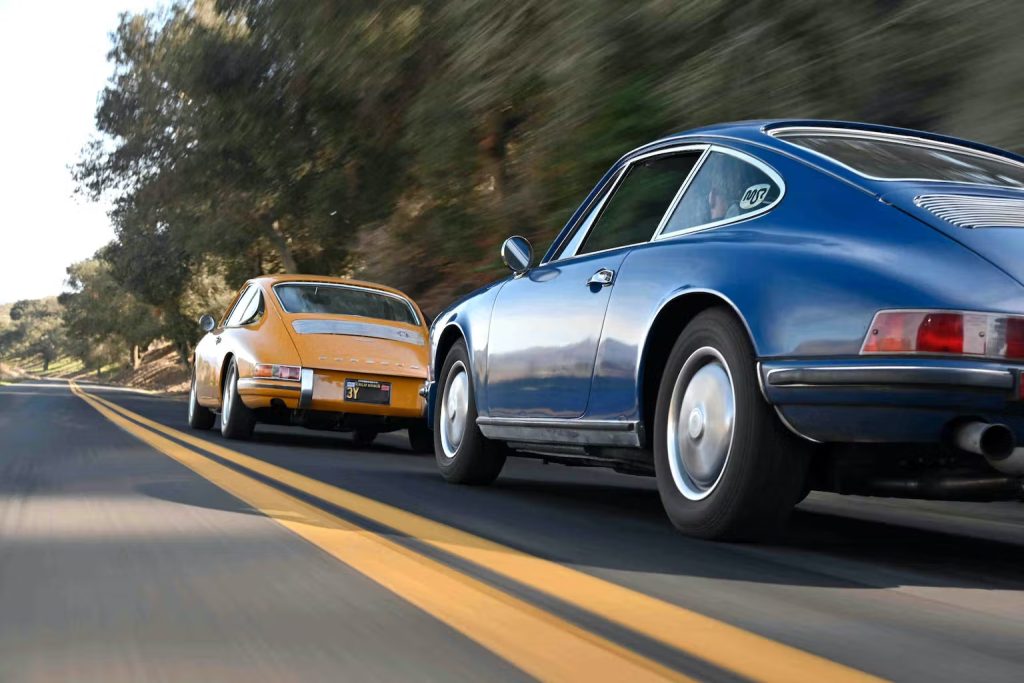
According to Hagerty, the 912 has a more balanced weight distribution. As per Hagerty, the 1600-cc Type 616 engine of the modern 911 is around 50 pounds (22 kg) lighter than the 2.0- and 2.2-liter six-cylinder engines. The 912’s enhanced aerodynamics and reduced weight provide it with significantly better handling than the 911.
And it’s not just balance, or the fact that the 912 had a smaller engine or a more minimalist cabin, but also that the 912 had better suspension. The “poor man’s 911” was incredibly lightweight and manageable on winding roads.
Body Style

The Porsche 911 comes in a two-door convertible, a two-door Targa top (1966–1989), and a two-door coupé. These body styles were introduced over time and at various price ranges. The Porsche 912 is only available as a coupé (coupé passenger seating capacity) since it is less expensive than the 911 models.
Conclusion
While those seeking maximum raw power and speed may find value in the Porsche 911 incentives, others may feel that the Porsche 912’s smaller weight and simpler design offer better handling and a more enjoyable driving experience. Moreover, classic 912s offer superior fuel efficiency than 911 ones. In conclusion, the 912 may be slow by current standards, but many will argue that it is well-balanced, light, and a joy to drive in any condition.

